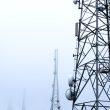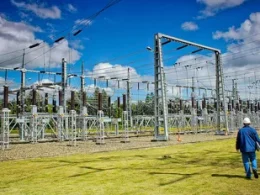In today’s digital age, reliable broadband access is no longer a luxury but a necessity. However, for many rural Americans, this necessity remains unfulfilled. The lack of access to reliable internet has left millions disconnected from the rest of the world, unable to fully participate in modern society or take advantage of its countless opportunities. In this blog post, we will explore the struggles faced by rural America due to the digital divide and discuss possible solutions to bridge this gap. So sit back and join us as we dive into the critical issue of disconnected rural America!
The Digital Divide in Rural America
The digital divide is a term used to describe the gap between those who have access to reliable internet and those who don’t. In rural America, this gap exists in a pronounced manner. According to recent studies, around 25% of rural Americans lack access to broadband internet.
This issue has far-reaching implications on both individuals and communities. Rural residents are often unable to complete online job applications or take part in remote work opportunities because of poor connectivity. Children in these areas struggle with virtual learning opportunities and fall behind their peers from urban areas.
Moreover, the lack of access hinders small businesses’ ability to compete globally, stifling economic growth in rural communities. It’s also worth noting that health care services suffer as well; telehealth services can improve treatment outcomes for patients living in rural areas but require high-speed internet connections.
In short, the digital divide is not merely an inconvenience for many people living in rural America; it’s an existential crisis affecting every aspect of life!
The Lack of Reliable Broadband Access in Rural Areas
Rural areas across the United States face a unique challenge in today’s digital age: a lack of reliable broadband access. In many cases, these communities are left with outdated infrastructure that simply cannot support modern internet speeds and connectivity. This creates significant obstacles for businesses, families, and individuals who rely on the internet to work, learn, communicate or complete daily tasks.
The problem is particularly acute in remote parts of the country where there may be only one provider for miles around. These providers often charge exorbitant prices for mediocre service because they know their customers have no other options. This leaves many rural residents feeling trapped and frustrated by their inability to connect with others online.
For students in rural areas who need to complete schoolwork or study remotely due to COVID-19 restrictions, this lack of reliable internet can be particularly devastating. Without consistent access to a strong connection, it becomes almost impossible for them to keep up with assignments or participate in virtual classes.
In some cases, local governments have attempted to step in and address this issue by providing funding or incentives for broadband expansion projects. However, progress has been slow going as there are still too few resources available compared to the scale of need across rural America.
Ultimately until more attention is given towards expanding high-speed internet services into underserved regions throughout America’s heartland will remain disconnected from much-needed resources necessary not only maintain but grow economically while also remaining competitive nationally as well as internationally
The Impact of the Digital Divide on Rural America
The digital divide in rural America has far-reaching consequences that go beyond just internet access. The lack of reliable broadband access can have a significant impact on the economic, educational and healthcare outcomes for individuals living in these areas.
For example, businesses located in rural communities may struggle to compete with their urban counterparts due to limited connectivity. This means they may miss out on opportunities to expand their customer base or attract new talent. Additionally, students who live in rural areas may not have equal access to online learning resources, which could hinder their academic progress and limit future job prospects.
In terms of healthcare, the digital divide can be particularly problematic for those living in remote locations where medical facilities are scarce. Telemedicine services that require high-speed internet connections can provide vital support to patients unable to travel long distances for appointments or specialist treatment.
Moreover, social isolation is another issue that arises from the digital divide as it limits communication and connection between people within different communities. Furthermore, it affects mental health and well-being especially during times when face-to-face contact is impossible such as pandemics or natural calamities.
Bridging the digital divide is essential if we want everyone across America regardless of location -in this case rural- to thrive economically and socially whilst having an equal opportunity at accessing education & healthcare facilities like any other American citizen would expect .
Solutions to the Digital Divide in Rural America
Solutions to the Digital Divide in Rural America
While the digital divide may seem like a daunting issue, there are several solutions that can help bridge this gap and provide rural communities with access to reliable broadband internet.
One solution is investing in infrastructure. This includes expanding broadband infrastructure into rural areas and updating outdated technology. Government funding can be crucial in making these investments possible.
Another potential solution is utilizing alternative technologies such as satellite or fixed wireless internet. These options may not require extensive physical infrastructure and can offer more flexibility for rural areas.
Collaboration between government agencies, private companies, and non-profit organizations can also aid in providing resources and support for rural communities lacking access to reliable broadband internet. This collaboration could lead to increased investment opportunities for technological advancements geared towards bridging the digital divide.
Education and awareness campaigns aimed at promoting digital literacy within these communities are essential as well. Giving individuals the knowledge they need to utilize available technology effectively could improve their overall quality of life while aiding them economically through expanded job opportunities.
Ultimately, addressing the digital divide requires comprehensive solutions tailored specifically for each community’s unique needs. While progress has been made over recent years, it’s important that we continue pushing forward until every American has equal access to high-speed internet connectivity regardless of where they live or work.
Conclusion
The digital divide in rural America is a pressing issue that needs immediate attention. The lack of reliable broadband access is depriving rural communities of their rights to education, healthcare, and economic opportunities. It is imperative for policymakers and internet service providers to prioritize expanding high-speed internet infrastructure in rural areas to bridge this gap.
Additionally, community-led initiatives such as public-private partnerships and municipal networks can also play a significant role in addressing the digital divide. By working together with government officials and local businesses, these initiatives can provide sustainable solutions for improving connectivity in underserved areas.
It’s time we recognize that access to the internet is not just a luxury, but a necessity for all Americans. Bridging the digital divide will ensure that every individual has equal opportunities to thrive regardless of where they live or work.












